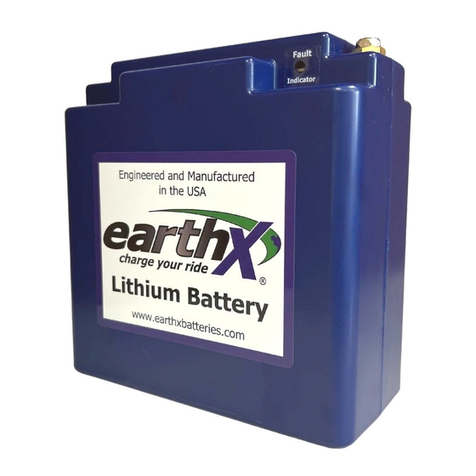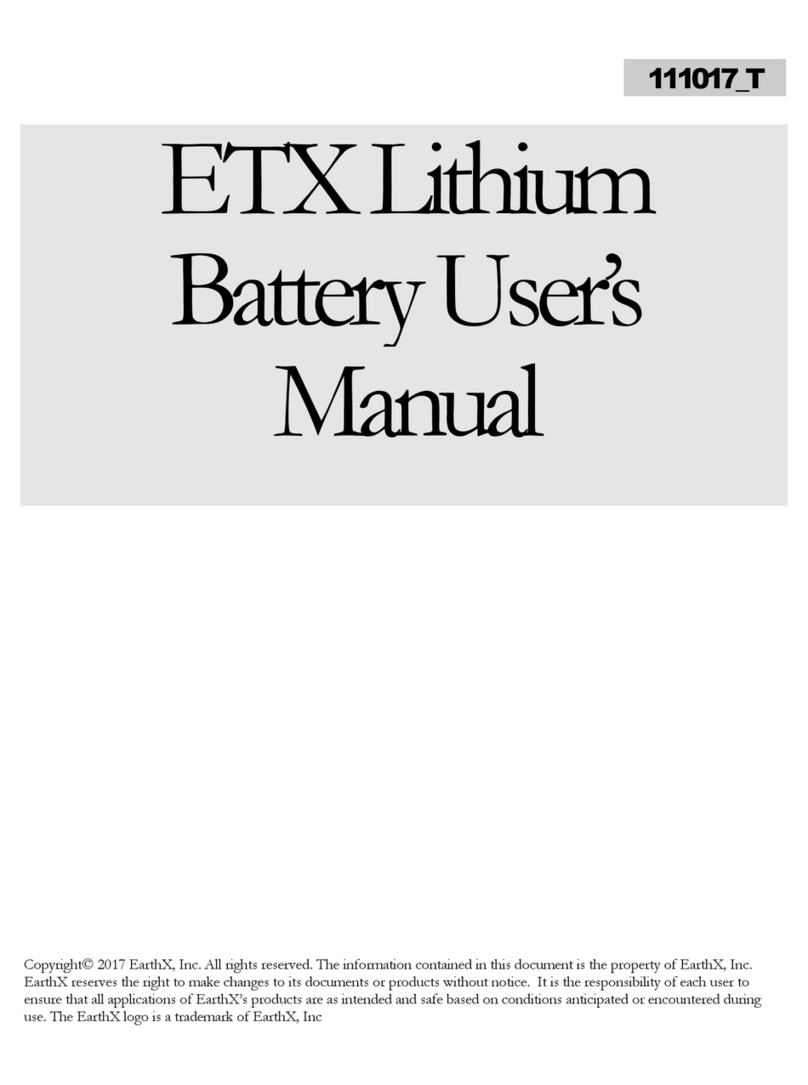The BMS has the following additional protective features; over-charge protection, over-
discharged protection (completely draining the battery), excessive cranking protection, high
temperature protection and short-circuit protection. The BMS was designed to Design
Assurance Level (DAL), C (major).
The BMS disconnects the battery from the load if it is drained to less than 3-5% remaining
charge (an over-discharge condition). An over-discharged battery typically has a voltage less
than 22V. If the BMS disconnects the battery, the voltage reading of the battery will be zero
volts. Excessive cranking protection logic includes current, temperature and time
monitoring to limit “high current use” (engine cranking) to 10 -30 seconds in any 60 second
period. If the battery terminals are “shorted” (or a low impedance load is connected across
terminals), which causes the battery volts to instantaneously drop to a very low level, the
battery will disconnect from the load to protect the cells and BMS from damage (short
circuit protection). If the BMS disconnects due to excessive cranking protection or short
circuit protection, the BMS will automatically reconnect after a cooldown period (typically 1-
3 minutes). The BMS is designed for short circuit protection > 1000 Amps.
In the event of a charging system failure where the voltage increases to above 32V, the
charging current is blocked. The time delay for this feature is 2 seconds to allow the aircraft
alternator’s over voltage protection to activate first (typically less than 100ms). This design
offers charge voltage protection greater than 100V. The discharge current (current out of
battery) is unaffected in this situation.
All components associated with main electronic battery disconnect are redundant. The
built-in redundancy ensures that no single point failure results in the battery unintentionally
disconnecting. The battery also includes a thermal run-away containment system. The
design aligns with the requirements for a FAA approved lithium battery as per RTCA
performance specification DO-311A and DO-160.
The battery’s micro-controller monitors all failure modes, and reports failures with a built-in
LED indicator, plus a discrete output and RS-232 communication link. The discrete output
for external fault monitoring is a single wire connection with a ¼” quick connect terminal.
The output is a “current sinking” type circuit (see diagram below) that can handle 100mA
(connects the discrete output to battery ground if a fault is present). This output can be
connected to an external 24V LED or general purpose discrete input of an EFIS. The fault
output has three states; fast flashing (2 seconds on/ 2 seconds off), slow flashing (5 seconds
on/ 5 seconds off) or solid. The fast flashing fault is an indication of high temperature;
temperature exceeding the normal operating or storage limits of the battery. The slow
flashing fault can indicate an improper state of charge or a problem with the cells internal to
the battery. The solid fault indicates a BMS hardware failure. See the RS-232
Communications section of this manual for more details.
RS-232 Communications
PhysicalLayer
The following defines the RS232 physical layer attributes:
Baud Rate: 1200






























